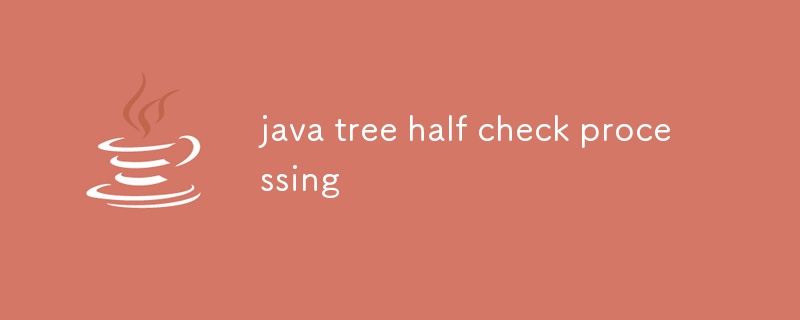
Implementing semi-selectable nodes in a Java tree structure involves introducing a third state besides selected and unselected. Best practices include clearly defining semantics, providing visual cues, and enabling easy toggling. Suitable data struct

How to implement semi-selectable behavior in a Java tree structure?
There are several approaches to implementing semi-selectable behavior in a Java tree structure. One common technique is to introduce a third state for nodes, besides the typical selected and unselected states. This third state, known as semi-selected, indicates that the node is partially selected, but not fully.
To implement this semi-selectable behavior, you can extend the existing node class to include an additional property or field to track the semi-selected state. You can then define appropriate methods to set and retrieve the semi-selected state of a node.
Another approach is to use a separate data structure to track the semi-selected nodes. For instance, you could maintain a list or set of nodes that are in the semi-selected state. This approach allows you to track semi-selected nodes efficiently, but it requires additional bookkeeping to ensure that the data structures remain synchronized.
What are the best practices for handling semi-selected nodes in a Java tree?
When handling semi-selected nodes in a Java tree, there are a few best practices to follow:
Which data structures are most suitable for representing a Java tree with semi-selected nodes?
The choice of data structure for representing a Java tree with semi-selected nodes depends on the specific implementation and performance requirements. Some suitable data structures include:
The above is the detailed content of java tree half check processing. For more information, please follow other related articles on the PHP Chinese website!
 What is the use of java
What is the use of java
 How to restore IE browser to automatically jump to EDGE
How to restore IE browser to automatically jump to EDGE
 What are the spring frameworks?
What are the spring frameworks?
 OKEX official website
OKEX official website
 Advantages of plc control system
Advantages of plc control system
 The difference and connection between c language and c++
The difference and connection between c language and c++
 Introduction to the main work content of front-end engineers
Introduction to the main work content of front-end engineers
 How to shut down your computer quickly
How to shut down your computer quickly
 What are the css3 gradient properties?
What are the css3 gradient properties?




